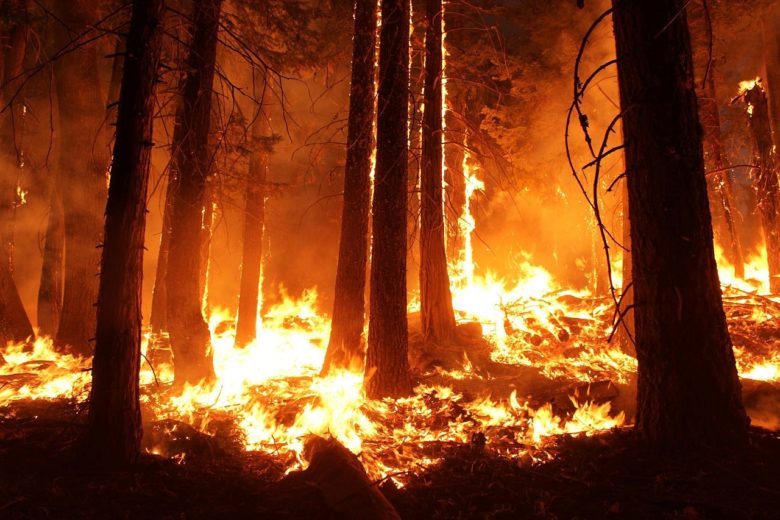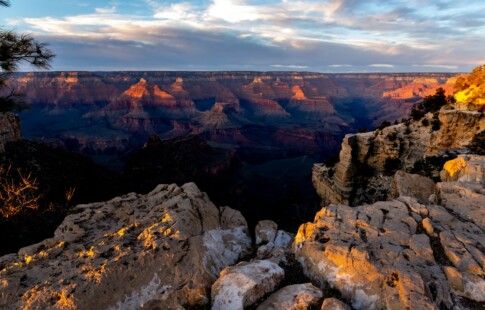
California Wildfires Devastate Humans and Animals
We are reader-supported. When you buy through links on our site, we may earn affiliate commission.
Search “california fires animals” and you’ll be met with an onslaught of sad news.
The increase of California’s wildfires in recent years has led to severe casualties for humans and animals. Wildfire season has seemed to expand throughout the entire year, as the disasters in 2018 began in February and lasted until late November.
However, the worst of the fires occurred at the end of the year with the Camp Fire, which lasted from Nov. 8 to 25. Now confirmed as the most destructive wildfire in California’s history, the fire affected more than the landscape.
As the town of Paradise perished and the surrounding Butte County area suffered, at least 85 people died in the Camp Fire. But humans weren’t the only victims of the wildfires this year. Animals, whether pets or cattle, were in danger, too. Different kinds of animals had specific needs during the disasters, which caused varying levels of safety.
Wildlife
The expanse of the wildfires stretched across acres of forests, which has left many wild animals injured or dead. Despite the instincts and escape mechanisms of these animals, many failed to evacuate the areas fast enough. As the fire raged through the landscape, smoke and fire destroyed habitats and killed populations of many species before they could reach safety.
While some individuals attempted to help wildlife distance themselves from the harmful flames during the year, the advice of forestry services like U.S. Forest Service and California Department of Fish and Wildlife is to let the wildlife find their way out by themselves.
Fire isn’t always negative. Indeed, several ecosystems in California need wildfires to reset. Some of the wildlife in these areas have adapted to the conditions and understand how to survive in dangerous times.
False claims on how to treat wildlife created problems during the wildfires in Southern California last December. Citizens were tending to local wildlife by placing buckets of water in their yards, mistakenly believing they were following forestry services’ instructions. In the case of an emergency, people can access environmental news from reliable sources to stay informed.
Pets and Farm Animals
Wild animals have the proper instincts to save themselves and their young, but domesticated animals have few survival skills in a wildfire setting. Many families brought their four-legged members when the disasters required evacuation, but some animals sadly got trapped in homes or separated from their owners.
Horses, cows and other large farm animals also died when barns and stables went up in flames. In San Diego County last December, racehorses perished at San Luis Rey Training Center during a wildfire. This year after the frequent fires, many local horses ended up wandering the streets because their owners could not transport them. Those who had time to move their large animals tried to evacuate them to surrounding beaches out of the fire’s reach.
Animal shelters and service centers stepped in to help with large and small animals alike during California’s recent wildfires. For injured pets, animal shelters and vets made themselves available to help. They also rescued abandoned animals.
Emotional support animals came on the scene during the Camp Fire to comfort displaced victims. Rescue workers brought specially trained cadaver dogs to the town of Paradise to search through the site for bodies.
Reuniting animals with their owners has been an impressive feat for rescuers. Embedded chips and tags helped many contact the right people, but many animals didn’t have any identification to aid these efforts. Others stepped up to house animals fleeing the fires, and social media and technology have been useful tools to return animals to families or find them new homes. People drove to pick up relatives’ and friends’ pets and transport them to secure locations.
Zoo Action Plans
Zoos also prepare for the effects of wildfires to keep their animals out of jeopardy. In November, a brush fire threatened the Los Angeles Zoo, causing them to start the evacuation of their animals. Though zoo workers couldn’t remove all their 1,400 inhabitants quickly, they had a plan that accounted for California’s disasters.
Transportation crates allowed the zoo to move smaller species that have higher conservation needs. The fire didn’t last long, so workers couldn’t complete the full emergency procedure. In the case of a more extreme situation that requires a rapid response, it takes a lot of time to load large animals into the necessary transportation to move them offsite. Instead, they move into buildings that can protect them from the fire.
Many zoos’ disaster procedures don’t have adequate measures for shielding their largest species, like giraffes and elephants, because anesthesia, training and equipment are required. But the facilities do all they can to keep their animals from harm.
The Aftermath of California Fires on Animals
California wildfires take significant efforts for individual recovery and community repairs, which are expensive. The rebuilding process from wildfires such as the Camp Fire and Woolsey Fire can take years. People have limited resources to recover their former lives, and animals that have been displaced or hurt have even fewer.
However, the efforts of animal shelters, vets, friendly people and intentional officials have started the means by which the area can contribute to animal recuperation after California’s devasting wildfires.
Share on
Like what you read? Join other Environment.co readers!
Get the latest updates on our planet by subscribing to the Environment.co newsletter!
About the author
Jane Marsh
Starting from an early age, Jane Marsh loved all animals and became a budding environmentalist. Now, Jane works as the Editor-in-Chief of Environment.co where she covers topics related to climate policy, renewable energy, the food industry, and more.





